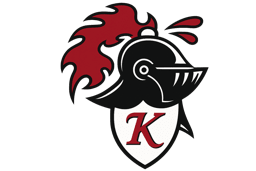Special Edition - Standards Based Grading
6 Things to Know about Standards Based Grading (SBG) at KHMS
Standards based grading isn’t new to students in the elementary level as they have been assessed in a standards based environment for many years; however, it is new to the middle school level. Our students from Early Childhood through 8th grade in Kaneland will be assessed/scored similarly. Below are six things to know about SBG.
- Standards Based
Grading Overview
With SBG, grades reflect student learning of academic
standards. Standards are the core of our instruction; they guide our
teachers’ instruction to help students, parents, and teachers know what is most
important for students to learn. With that in mind, all assignments and
assessments are linked to a standard. Assessment scores represent what
students know and have learned. Therefore, scores are based on a
student’s achievement of academic standards.
In the standards-based classroom, student proficiency in
standards is recorded over time, often using the most recent evidence. Thus,
students are not penalized for not knowing content at the beginning of a
course/unit of study, as can be the practice in a traditionally graded course
when all scores are averaged together. Students will be able to explain
what they learned or did not learn rather than recite a letter grade or percentage.
2. Assessment of Learning
We will provide students
the opportunity to show what they have learned after instruction and after
numerous times to practice newly learned skills. They will practice and apply
these skills through two different forms of assessment: formative assessment
and summative assessment.
Formative Assessment
Think of formative
assessment as “academic practice.” Practice is important because it
allows students to receive feedback while they are learning new material.
This type of assessment provides students opportunities to practice skills and
standards to help make learning permanent. While formative assessment is
not officially graded, you will see feedback in Canvas Gradebook. Also
students will quickly find that if they don’t practice and turn in assignments,
their summative grade will suffer. The work needs to be done in order to
do well on summative assessments.
Summative Assessment
Think of summative
assessment as a measure of academic achievement. This is the work
students do to show what they know after they’ve had time to practice
and learn. Summative assessments can include a wide variety of tasks,
such as projects, performances, tests. etc. Summative assessments will be
reported/scored and entered in Canvas Gradebook with a 3, 2, 1, or NE (No Evidence).
3. Interpreting SBG Scores from Early
Childhood through 8th Grade
Kaneland School District utilizes a scale score of NE-3 for
our Early Childhood (EC) through 8th grade students. Below are the
descriptors of each scale score as it relates to student demonstration of
proficiency.
4. What Changes with Standards Based
Grading vs. What Stays the Same?
|
What Changes |
What Remains the Same |
|
Grades will be reported
based on proficiency tables and a rating of NE-3 (EC-8) |
Our focus continues to
be our District’s Mission Statement to graduate College, Career, and
Community ready |
|
Scores will be directly
related to a reported standard |
The Kaneland Curriculum
is aligned to rigorous national and state academic standards |
|
Students and teachers
will co-construct feedback based on formative assessment in class |
Students are expected to
engage in classroom discussions, collaborate with peers and teachers, and complete
formative assessments (any practice work both in and out of
class time)
during the week |
|
Formative assessments
will be completed for practice and not be scored in a traditional manner |
Students will be
assessed (test, paper, project) and receive a score |
|
Teachers still
communicate expectations for learning |
5. Core Value Grades
Just like academic
standards, students will be assessed in non-academic factors as well.
Following our Kaneland Core Values of Respect, Responsibility, and Commitment
to Excellence, each student will receive a score (3, 2, 1, NE) for each core
value at the end of each Term. These scores will be shared on your
child’s report card at the end of each
Term.
6. Finding Student’s Scores
The feedback we’ve
received over the years has been heard. During each term, your child’s
progress/scores can be found in Canvas. Our staff will communicate how to
access these scores. All scores throughout the term should be accessed
through Canvas.

